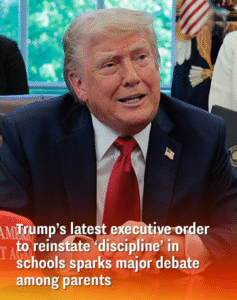On February 28, 2025, President Donald Trump signed Executive Order 14221, intensifying efforts to enhance healthcare price transparency across the United States. This move builds upon his 2019 initiative, Executive Order 13877, which aimed to empower patients with clear and accurate pricing information to make informed healthcare decisions. The new order mandates federal agencies to enforce existing transparency regulations more rigorously and develop a comprehensive framework within 90 days to ensure compliance. JD SupraAkin GumpAkin Gump+2Healthcare Dive+2Yahoo+2
Key Provisions of Executive Order 14221
The executive order directs the Departments of the Treasury, Labor, and Health and Human Services to collaborate in creating a robust enforcement mechanism for healthcare price transparency. This includes compelling hospitals and insurers to disclose upfront pricing for services, procedures, and medications. The goal is to eliminate hidden costs and surprise billing, thereby fostering a more competitive and consumer-friendly healthcare market. Healthcare Dive+1Yahoo+1Radiology Business+1Axios+1
Additionally, the order emphasizes the need for clear communication of pricing information to patients, ensuring that they can compare costs effectively and make choices that align with their financial and health needs. By promoting transparency, the administration aims to drive down healthcare costs through increased competition and informed consumer decision-making.
Context and Rationale
The push for price transparency has been a consistent theme in President Trump’s healthcare policy agenda. The 2019 executive order laid the groundwork by requiring hospitals to publish standard charges for services. However, implementation faced resistance from some healthcare providers and legal challenges, leading to delays and limited compliance.
Recognizing these challenges, the 2025 executive order seeks to reinforce and expedite the enforcement of transparency measures. The administration argues that transparent pricing is essential for reducing healthcare costs, preventing unexpected medical bills, and empowering patients to make value-based healthcare decisions.
Industry Response and Challenges
The healthcare industry’s response to the executive order has been mixed. While some stakeholders acknowledge the benefits of transparency, others express concerns about the potential administrative burden and the impact on competitive dynamics. Hospitals, in particular, have raised issues regarding the complexity of pricing structures and the feasibility of providing standardized cost information.
Legal challenges have also emerged, with some healthcare organizations questioning the federal government’s authority to mandate such disclosures. These disputes highlight the ongoing tension between regulatory efforts to promote transparency and industry concerns about operational and competitive implications.Axios
Implications for Patients
For patients, the executive order promises greater visibility into healthcare costs, enabling more informed choices and potentially leading to cost savings. By having access to pricing information upfront, patients can compare providers, anticipate expenses, and avoid unexpected bills. This transparency is expected to foster a more competitive healthcare market, encouraging providers to offer better value services.
However, the effectiveness of these measures will depend on the successful implementation and enforcement of the transparency requirements. Ensuring that pricing information is accurate, accessible, and comprehensible will be critical to achieving the intended benefits for consumers.
Conclusion
President Trump’s Executive Order 14221 represents a significant step toward enhancing healthcare price transparency in the United States. By building upon previous initiatives and addressing enforcement challenges, the administration aims to create a more transparent and competitive healthcare system. While the order faces implementation hurdles and industry resistance, its focus on empowering patients with pricing information aligns with broader efforts to reduce healthcare costs and improve consumer decision-making.
